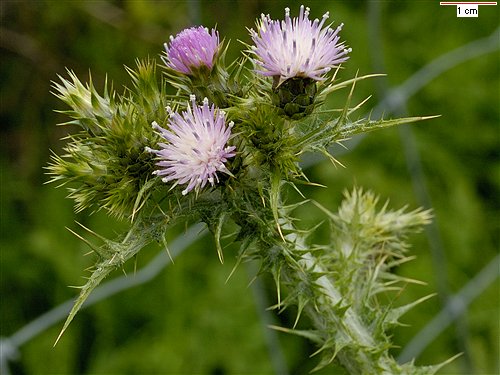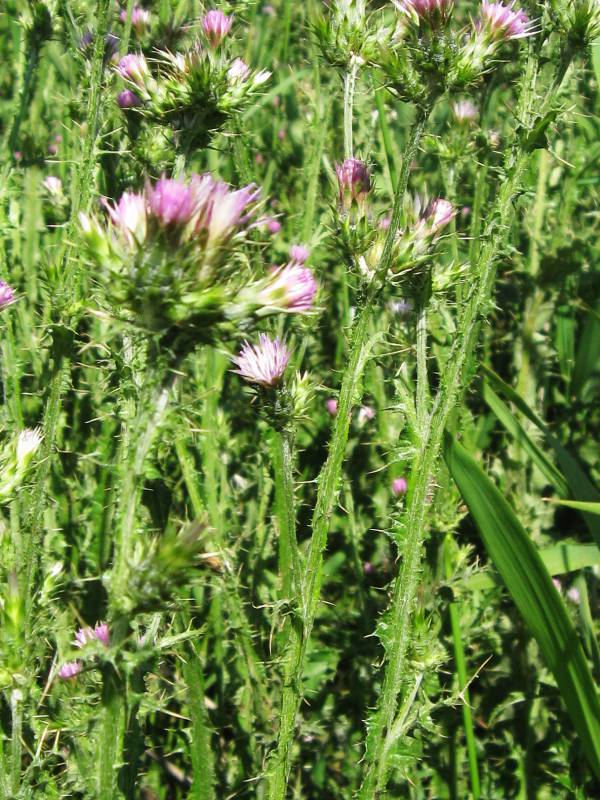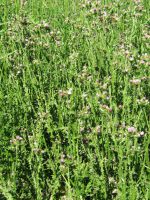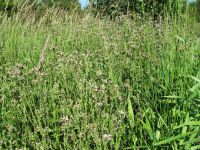Distribution: Occurring west of the Cascades crest in southwestern Washington; Washington to California, also in the eastern U.S.
Habitat: Roadsides, fields, ditches, wastelots, and other disturbed areas at low elevations.
Flowers: June-July
Origin: Introduced from Europe
Growth Duration: Annual
Conservation Status: Not of concern
Pollination: Bees, flies, beetles, wasps
Erect annual, the stems 20-200 cm. tall, simple or openly branched, loosely white-woolly; wings from the leaf bases with teeth to 25 mm. long and spines to 15 mm. long.
Basal leaves tapered to winged petioles, the blades 10-25 cm. long, somewhat woolly on both surfaces, the margins pinnately 6-10 lobed; cauline leaves alternate, sessile, shorter and less divided.
Heads in tight clusters of 5-20 at the ends of stems, sessile, 15-22 mm. long and 7-12 mm. wide; involucral bracts linear-lanceolate, 2-2.5 mm. wide, mostly glabrous, with narrow scarious margins, the outer with spine tips 1-2 mm. long, the inner spineless; corollas pinkish, 10-14 mm. long, the lobes 1.5-2.5 times longer than the throat; pappus bristles 10-15 mm. long.
Achene brown, 4-5 mm. long.
Publication: Fl. Londin. 2(6,61): plate 55. 1789.
PNW Herbaria: Specimen records of Carduus tenuiflorus in the Consortium of Pacific Northwest Herbaria database
WA Flora Checklist: Carduus tenuiflorus checklist entry
OregonFlora: Carduus tenuiflorus information
E-Flora BC: Carduus tenuiflorus atlas page
CalPhotos: Carduus tenuiflorus photos







